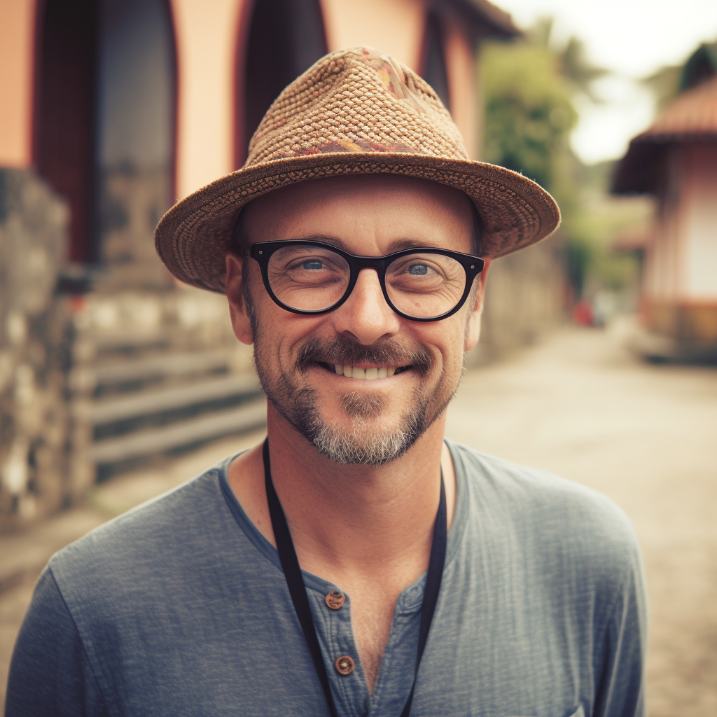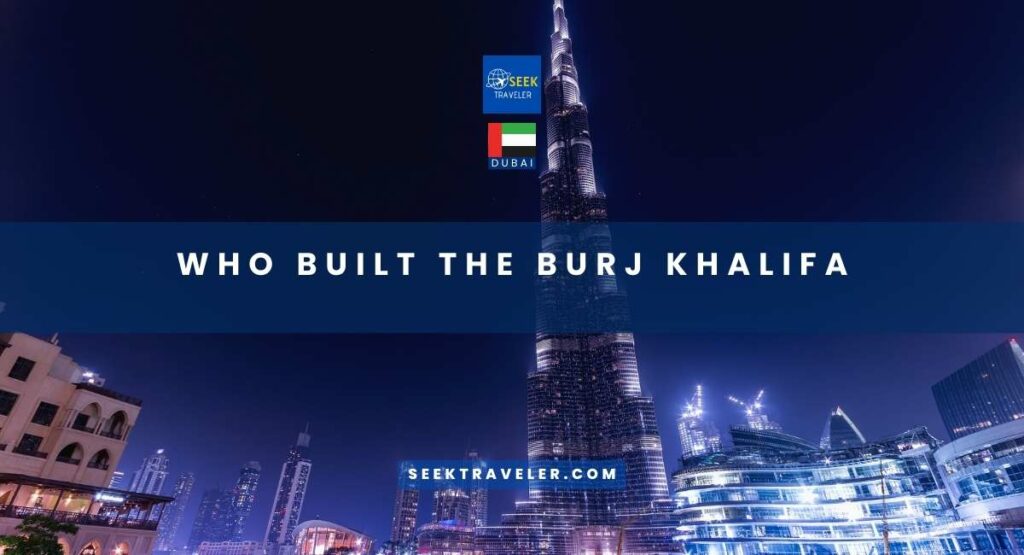I’ve always been fascinated by the Burj Khalifa in Dubai. As the tallest building in the world, it’s an incredible feat of engineering and architecture. But who actually built this magnificent structure?
In this article, I’ll explore the primary architect and design firm behind the Burj Khalifa, as well as the collaborating firms and individuals who made this project a reality.
The Burj Khalifa was designed by Skidmore, Owings & Merrill (SOM), an American architectural firm based in Chicago. Adrian Smith was the chief architect for the project, leading a team that included Bill Baker as chief structural engineer and George Efstathiou as managing partner.
SOM has a long history of designing tall buildings around the world, including iconic structures like Sears Tower (now known as Willis Tower) in Chicago and One World Trade Center in New York City. With their expertise in high-rise construction, SOM was a natural choice to lead the design process for the Burj Khalifa.
The Primary Architect and Design Firm
You’ll learn about the primary architect and design firm behind this iconic skyscraper. The Burj Khalifa was designed by Skidmore, Owings & Merrill (SOM), a globally renowned architectural firm based in Chicago.
Adrian Smith, who was then an employee of SOM, headed the team responsible for designing the tower. The design process took six years and involved numerous iterations before arriving at the final product.
SOM aimed to create a building that wouldn’t only be aesthetically pleasing but also functional and sustainable. The result is a structure that stands 828 meters tall with over 160 floors, making it one of the tallest buildings in the world.
Collaborating firms and individuals were also instrumental in bringing SOM’s vision to life, contributing their expertise in areas such as structural engineering and project management.
Collaborating Firms and Individuals
As you explore the Collaborating Firms and Individuals section, you may be surprised to learn that some of the biggest names in global architecture and engineering came together to create this iconic structure. Skidmore, Owings & Merrill (SOM) was the primary architect for Burj Khalifa, but they worked closely with several other firms and individuals throughout the design process.
One of these firms was Adrian Smith + Gordon Gill Architecture (AS+GG), who collaborated with SOM on the initial concept design. The structural engineer behind Burj Khalifa was Bill Baker from SOM, who developed a unique system of ‘buttressed core walls’ to support the building’s immense height.
Other key players in the creation of Burj Khalifa include Turner Construction International, who served as project manager during construction, and Hyder Consulting Middle East Limited, who provided infrastructure design services. The curtain wall contractor for Burj Khalifa was Arabian Aluminium Company (Alumco), and Samsung C&T Corporation was responsible for construction.
All of these firms and individuals contributed their expertise to bring this incredible structure to life. As we move into discussing the construction process, it’s important to note that these collaborating firms and individuals played a crucial role in ensuring that every aspect of Burj Khalifa’s design could be realized in reality.
Construction Process
During the construction of Burj Khalifa, I faced several challenges that required innovative techniques to overcome.
The most significant barrier was designing a structure that could withstand high winds and extreme temperatures prevalent in Dubai. To solve this, we used advanced computer models to simulate different weather conditions and design solutions to ensure the tower’s stability.
Additionally, we employed cutting-edge technologies like high-strength concrete and state-of-the-art cranes to ensure timely completion of the project.
Challenges Faced During Construction
The construction of the world’s tallest building wasn’t without its fair share of obstacles and difficulties. One major challenge faced during the construction of Burj Khalifa was the extreme weather conditions. Dubai is known for its hot and humid climate, which made it difficult for workers to work outside for extended periods of time. The temperature would often exceed 50°C, making it dangerous for those working at high altitudes.
Another challenge faced during the construction process was ensuring that the tower could withstand strong winds and earthquakes. To overcome this, engineers had to design a structure that could flex up to 1.5 meters in any direction without causing damage to the building or compromising its stability. This required innovative techniques such as using a reinforced concrete core and steel cables anchored deep into the ground.
With these challenges successfully tackled, innovative techniques used in building Burj Khalifa were introduced, paving the way for an incredible masterpiece that is now admired globally.
Innovative Techniques Used to Build the Tower
Get ready to be amazed by the innovative methods used to construct the world’s tallest building, revolutionizing skyscraper engineering forever.
One of the most impressive techniques was the use of a high-strength concrete with a compressive strength of up to 12,000 psi, allowing for thinner walls and more interior space. To ensure that this concrete was properly mixed and placed, workers used advanced pumping systems and robotic arms to place it precisely where it needed to go.
Another groundbreaking method used during construction was the installation of a massive spire at the very top of the building. This spire not only acted as a lightning rod but also played an important role in stabilizing the structure against wind loads. To install it, engineers designed a complex system involving cranes, guy wires, and temporary platforms that allowed workers to safely maneuver the enormous pieces into place.
With these incredible techniques and many more, it’s no wonder that Burj Khalifa stands tall today as one of humanity’s greatest architectural achievements. And so we move onto completion and opening – but first let’s take a moment to appreciate all those who made this remarkable feat possible through their hard work and ingenuity.
Completion and Opening
After years of hard work and dedication, the world’s tallest skyscraper was finally completed and opened to the public. The Burj Khalifa officially opened on January 4, 2010, with a spectacular display of fireworks lighting up the Dubai sky.
It was a momentous occasion for everyone involved in the project, from architects and engineers to construction workers and developers. The tower’s completion marked the end of an era in building design and engineering.
It had taken six years to construct, during which time innovative techniques were employed to ensure its safety and stability. Some of these included a reinforced concrete core that acted as a backbone for the structure, wind-resistant cladding that reduced sway from high winds, as well as state-of-the-art elevators that could travel at speeds of up to 40 mph.
With all these features combined, it was clear that Burj Khalifa would go down in history as one of mankind’s greatest achievements. With such an iconic building under their belt, Dubai has become known worldwide for its grand architectural feats.
But what impact has this massive structure had on society? Let’s explore this further in the next section.
Legacy and Impact
Now that we know about the completion and opening of Burj Khalifa, let’s talk about its legacy and impact.
As the tallest building in the world, it has become a symbol of modern engineering and architecture. Its unique design and stunning height have attracted tourists from all over the world, making it one of Dubai’s top attractions.
Aside from its visual appeal, Burj Khalifa has also had a significant impact on the economy and tourism industry of Dubai. It has brought in millions of dollars in revenue through ticket sales, hotel bookings, and other related businesses.
Additionally, its construction provided thousands of jobs for both local Emiratis and foreign workers.
Overall, Burj Khalifa serves as a testament to human ingenuity and innovation while also contributing to the growth and development of Dubai as a global city.
Conclusion
As I stand here, gazing up at the towering structure of the Burj Khalifa, I can’t help but be reminded of a majestic eagle soaring high above in the sky.
Just as the eagle has a keen eye for detail and a sharp sense of purpose, so too did the architects and builders who brought this magnificent building to life.
The Burj Khalifa isn’t just a building – it’s an allegory for human achievement. It showcases what we’re capable of when we put our minds to it, when we work together towards a common goal.
From its primary architect and design firm to every individual who played a role in its construction, this skyscraper stands as a testament to what can be accomplished with hard work, dedication, and an unwavering commitment to excellence.
And that legacy will continue to inspire us for generations to come.

Meet Scott Robinson, a seasoned traveler with 28 countries under his belt, has immersed himself in diverse cultures around the world. His articles are a window into the rich tapestry of traditions, customs, and local flavors he has encountered on his globetrotting escapades. Scott’s deep appreciation for the beauty of cultural diversity shines through his writing, allowing you to embark on a virtual journey that celebrates the vibrant mosaic of humanity.



